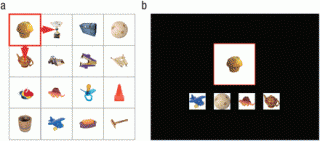Career
Why Do Icons on Smart Phone Screens Slide?
User interfaces are more effective when objects appear to keep existing.
Posted August 13, 2015

Standing in line at any coffee shop gives you a chance to observe lots of smart phone behavior. Almost everyone in the line is staring at a small screen. Many of them are busily swiping at the screen, presumably moving the icons on the screen from page to page?
When you are navigating through your icons, and you swipe a screen, the entire set of icons moves to the right or left and is replaced with the next screen. This motion feels quite natural. Why does it work so well?
This question was explored by Brandon Liverence and Brian Scholl in a paper in the July, 2015 issue of Psychological Science.
These researchers suggest that people are better able to keep track of icons if they have the illusion that these icons continue to exist after they move from the screen than if they disappear.
To test this idea, participants were given a task in which a set of pictures was arranged into a 4 x 4 grid like that shown in the figure in this blog entry. Participants were started at a location in the grid and were asked to find four of the pictures in order and click on them when they found them. They could move left, right, up, or down by pressing buttons on the computer keyboard to navigate the grid.
The experiments manipulated the transition from one image to the next. On some blocks of trials, the images would move in the direction opposite the motion and the new image would move into place just as it does on a typical smart phone. That is, one image slid out of view while the other slid into view. On other blocks of trials the first image would fade out and the second image would fade in. Fading in and out like this does not give a sense that the object continues to exist when it moves.
Participants were much better at this task when the objects slid in and out of view than when they faded in and out. Across 50 trials, participants were consistently faster to find the four objects when the objects slide than when they faded.
A second study obtained similar results contrasting the sliding motion of objects with objects being wiped by a blank screen that erased the object and then moved to reveal the other object.
A third study demonstrated that people were equally good at giving explicit reconstructions of the locations of the objects in the grid regardless of the type of transition used. So, the transition from one object to the next was not affecting people’s ability to learn where the objects were in the grid. Instead, it was affecting their ability to navigate quickly from one object to the next.
These studies suggest that part of the way we think about moving around real or imaginary spaces is by keeping track of the locations of objects in those spaces. We are able to use simple cues from vision (like objects moving on and off the screen) as evidence of where those objects are located in an imaginary (or virtual) space.
User interfaces are most effective when they take advantage of these aspects of our visual system. For example, the Apple iOS requires that screens slide from one to another, which does take advantage of this aspect of vision. The Android OS has an option to allow icons to fade in and out of view. Presumably, it is harder for users to navigate their phone when this option is selected.
More generally, this work highlights why user interface design needs to take psychology into account. It is easy to create user interfaces that look good but fail to respect aspects of psychology that would be impossible for people to talk about. That is why it is important for the developers of products and websites to do good testing to understand the impact of their design decisions on the usability of products.
Follow me on Twitter.
And on Facebook and on Google+.
Check out my new book Smart Change.
And my books Smart Thinking and Habits of Leadership
Listen to my radio show on KUT radio in Austin Two Guys on Your Head and follow 2GoYH on Twitter and on Facebook.





